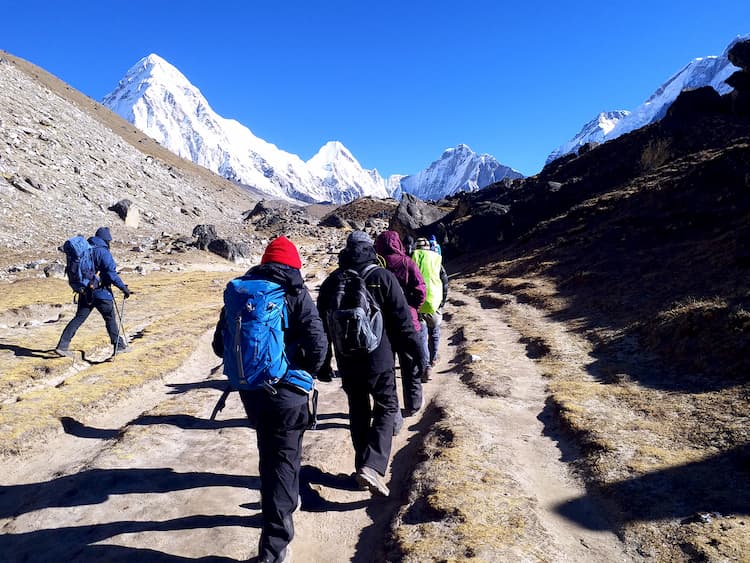Nepal situated below the Himalayan shed of the world’s highest mountain peaks in the North and above the plains of Tarai stretching from the far-west to the far-east covering the entire southern part of the country. Though the total area of Nepal is only 1, 47, 181 sq. km we can find the highest mountain on earth Mt Everest to the lowest altitude in the region to be 70m above sea level.
The climate of the country changes swiftly from the sub-tropical Tarai region in the southern part to the cool dry temperate in the hilly region and alpine conditions in the northern Himalayan ranges within a very short span of just 200 km from South to the North. The southern part remains as hottest part of the country, summer temperatures peak above 44°C. The climate here is mostly hot and humid. At the same season in the middle hills, the summer climate is pleasant with temperatures around 26°C – 29°C on average. The winter remains chilling and dry in the Terai region with temperatures ranging from 7°C to 24°C and sub-zero to 19°C in the mountainous regions, hills, and valleys. The northern Himalayan region has an alpine climate with temperatures reaching below 4°C -30°C in the winter. Because of such a big climatic difference; the biodiversity and wildlife in Nepal are equally diverse in variety ranging from Snow leopards and red Panda to One-horned rhinos and Tigers.
Not only climate and the geography of this country are unique but the traditional values and cultural aspects of the people living in this country are antique. Over 125 ethnic groups are found within the country having their unique cultural values and traditions. The cultural abundance of Nepal has crucial significance in maintaining unity in diversity among the people. The cultural heritage and practices of Nepal have evolved over the centuries. This multi-dimensional heritage possesses the diversities of Nepal’s ethnic, tribal, and social groups, and it is reflected in their daily life, cultural practices, music and dances; art and craft; folklore and folktales; languages and literature; philosophy and religion; festivals and celebration; foods and drinks.
The Nepal government’s official data from the 2001 census identified 80.6% of the population being Hindu. Buddhism being the second most followed religion was practiced by about 11% of the population (although many people labelled Hindu or Buddhist often practice a syncretic blend of Hinduism, Buddhism, and/or animist traditions). About 3.2% practice Islam and 3.6% of the population follows the indigenous Kirant religion. Christianity is practiced officially by less than 0.5%. Lord Gautam Buddha was born in the Lumbini region of Nepal and the god of all the living creatures in the form of Lord Shiva resides here as Shree Pashupatinath. This is the land of Gurkha, the bravest warriors on earth and the most loving heart with ability to forgive the enemy if they surrender.
In-depth cultural aspect of Nepal
People in Nepal have the habit of living in harmony and united together. Friendships in the country have a strong significance and substance to people in Nepal. Commitments and promises have to be kept once done among the friends circle. They are approached quite earnestly and are not usually shallow relationships that can come and go quickly like a tide. There is a sense of graciousness and humbleness that comes with sharing in another’s presence; people every time are “humbled” to meet others, receive someone as a guest, or make a new friend. Guests are considered and treated as the form of god in Nepal. When the relationship gets stronger and more trustworthy a friendship begins, so too does an expectation of loyalty and reliability. Normally, Nepalis people feel comfortable when they are accompanied in whatever they do. The people love companionship and are known to strike up a conversation for little more reason other than to talk.










